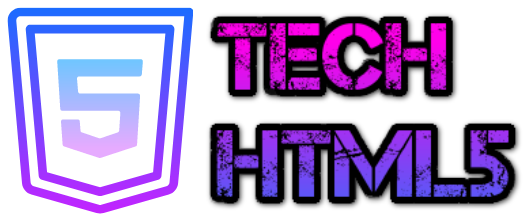In the fast-paced world of full stack development, making visually appealing and functional interfaces is crucial. Tailwind CSS, a utility-first CSS framework, has gained popularity for enabling developers to build and customise responsive UIs quickly. Unlike traditional CSS frameworks, Tailwind provides utility classes that simplify styling without writing custom CSS from scratch. This approach is ideal for rapid UI development, making it a valuable tool for full stack developers. For those enrolled in a Java full stack developer course, learning Tailwind CSS can accelerate their ability to design intuitive interfaces that enhance the user experience.
What is Tailwind CSS?
Tailwind CSS is the first CSS framework that offers a set of pre-defined classes, allowing developers to style elements directly in their HTML. These utility classes represent common CSS properties, such as margins, padding, colours, and typography, which can be combined to create custom designs. Unlike component-based frameworks like Bootstrap, Tailwind does not provide pre-built components but instead offers the building blocks to create any design.
This unique approach to styling provides developers with more flexibility and control, allowing for rapid iteration and customization. For students in a full stack developer course in Bangalore, mastering Tailwind CSS can significantly speed up the development process.
Benefits of Using Tailwind CSS in Full Stack Development
Tailwind CSS offers a lot of benefits that make it ideal for full stack projects:
- Rapid Development: With utility classes, developers can style elements directly in the HTML, reducing the need for context switching between HTML and CSS files. This speeds up the design process and allows developers to quickly prototype and refine UI elements.
- Customizability: Tailwind CSS is highly customizable, allowing developers to modify its default configuration or extend it with custom utility classes. This makes it uncomplicated to create unique designs that match brand guidelines or specific project requirements.
- Responsive Design: Tailwind provides responsive utility out-of-the-box, making it straightforward to create layouts that adapt to different screen sizes. This is particularly useful in full stack development, where applications need to provide a seamless experience across devices.
- Consistency and Maintainability: Utility classes help maintain consistency across the UI by standardizing spacing, colours, and typography. This reduces the risk of design inconsistencies and makes the codebase easier to maintain.
For anyone in a Java full stack developer course, these benefits demonstrate how Tailwind CSS can streamline the UI development process. By enabling faster development and ensuring design consistency, Tailwind allows full stack developers to deliver polished interfaces that meet user expectations.
How Tailwind CSS Enhances UI Development
Tailwind CSS enhances UI development by promoting a utility-first approach, which focuses on applying small, reusable utility classes directly to elements. This differs from traditional CSS methodologies, such as BEM (Block Element Modifier) or SMACSS (Scalable and Modular Architecture for CSS), which rely on creating custom classes for specific elements or components.
With Tailwind, instead of writing custom classes like .header-primary or .btn-large, developers can apply classes like bg-blue-500, text-white, and p-4 directly to an element. This allows for rapid experimentation and iteration, as changes can be made by simply adjusting utility classes in the HTML.
For students in a full stack developer course in Bangalore, this approach offers a practical way to build UIs without needing extensive CSS knowledge. Tailwind’s utility-first methodology reduces the complexity of styling, letting developers concentrate on building features and functionality.
Tailwind CSS and Component-Based Frameworks
One of the advantages of Tailwind CSS is its compatibility with component-based frameworks like React, Vue, and Angular. Tailwind’s utility classes can be easily integrated into component-based architectures, enabling developers to build modular and reusable UI components. This makes Tailwind an excellent choice for full stack projects that leverage modern front-end frameworks.
In a React application, for example, developers can create reusable components with Tailwind classes embedded directly within the JSX. This allows for consistent styling across components and simplifies the process of updating the UI. By using Tailwind with component-based frameworks, developers can build scalable UIs that are both efficient and visually cohesive.
For those in a Java full stack developer course, learning to use Tailwind CSS with component-based frameworks provides a versatile skill set that can be used on a broad range of projects. This knowledge is particularly valuable in full stack development, where building reusable components is key to maintaining a modular and scalable codebase.
Customizing Tailwind CSS for Project-Specific Needs
Tailwind CSS offers extensive customization options, allowing developers to customize the framework to meet specific project requirements. Using the configuration file, developers can override default settings, such as colors, spacing, and breakpoints, or add new utility classes. This flexibility enables developers to align Tailwind’s utility classes with brand guidelines or create unique designs that stand out.
Tailwind also supports plugins, which extend the framework with additional functionality or custom utilities. This makes it easy to add features like custom animations, gradients, or typography utilities, enhancing the design possibilities without writing extensive custom CSS. For students in a full stack developer course in Bangalore, learning to customize Tailwind CSS offers a hands-on understanding of how to adapt tools to meet real-world project needs, improving their ability to deliver tailored solutions.
Implementing Tailwind CSS in Full Stack Projects
Implementing Tailwind CSS in full stack projects is straightforward, as it can be easily integrated with various tech stacks. Whether using JavaScript frameworks, static site generators, or server-side rendering with Express.js, Tailwind can be configured to work seamlessly with different tools. In a typical setup, Tailwind is installed via npm and configured to purge unused styles, ensuring optimal performance.
For full stack developers, understanding how to integrate Tailwind CSS into different environments is crucial. By learning to configure Tailwind for diverse projects, developers can quickly adapt to different stacks and build responsive, high-performance UIs. For those enrolled in a Java full stack developer course, gaining this knowledge can broaden their expertise and prepare them for a variety of development scenarios.
Best Practices for Using Tailwind CSS in Full Stack Development
To make the most of Tailwind CSS, developers should follow best practices that ensure maintainability and performance:
- Use PurgeCSS: Tailwind generates a large CSS file by default, which can impact performance. PurgeCSS helps reduce the file size by removing unused classes and improving load times.
- Leverage Tailwind’s Responsive Utilities: Tailwind’s responsive utilities make it easy to create adaptive layouts. Developers should take advantage of these utilities to ensure their UIs look great on all devices.
- Create Reusable Components: While Tailwind encourages applying classes directly, it’s still important to create reusable components for complex elements. This promotes code reuse and simplifies maintenance.
- Customize for Consistency: Modify Tailwind’s default settings to establish a consistent design system across the application. This ensures uniform spacing, colours, and typography, enhancing the overall user experience.
These best practices are essential for anyone in a full stack developer course in Bangalore, as they provide guidance on how to use Tailwind CSS effectively. By following these principles, developers can create high-quality UIs that are both efficient and maintainable.
Conclusion
Tailwind CSS is a powerful tool for rapid UI development in full stack projects, offering a utility-first approach that simplifies styling and enhances flexibility. For developers pursuing a Java full stack developer course, learning Tailwind CSS can significantly accelerate their workflow, enabling them to build responsive and customizable UIs with ease.
As more projects demand quick iteration and unique designs, the utility-first approach of Tailwind CSS provides an efficient solution for full stack developers. For students in a full stack developer course in Bangalore, mastering Tailwind CSS offers a valuable addition to their skill set, preparing them to meet the challenges of modern web development with confidence.
Business Name: ExcelR – Full Stack Developer And Business Analyst Course in Bangalore
Address: 10, 3rd floor, Safeway Plaza, 27th Main Rd, Old Madiwala, Jay Bheema Nagar, 1st Stage, BTM 1st Stage, Bengaluru, Karnataka 560068
Phone: 7353006061
Business Email: enquiry@excelr.com



